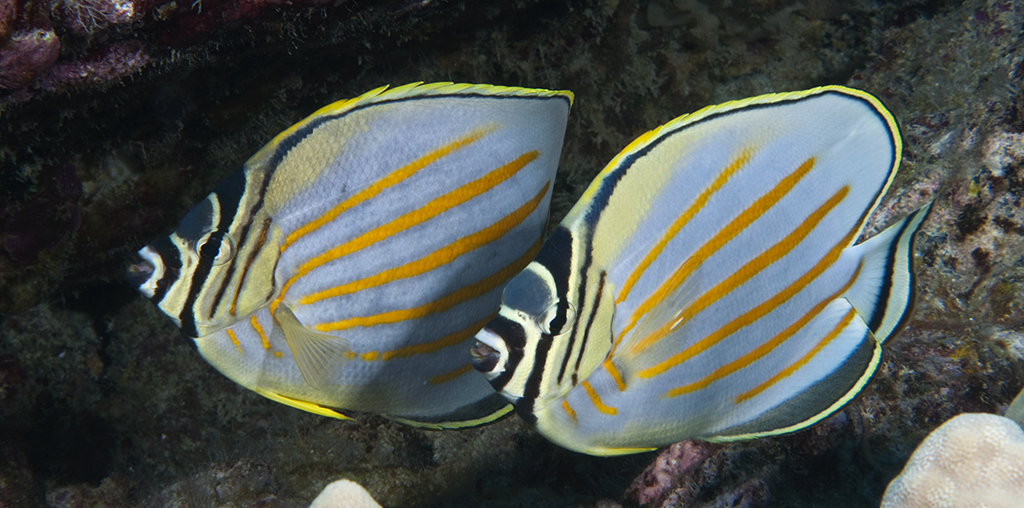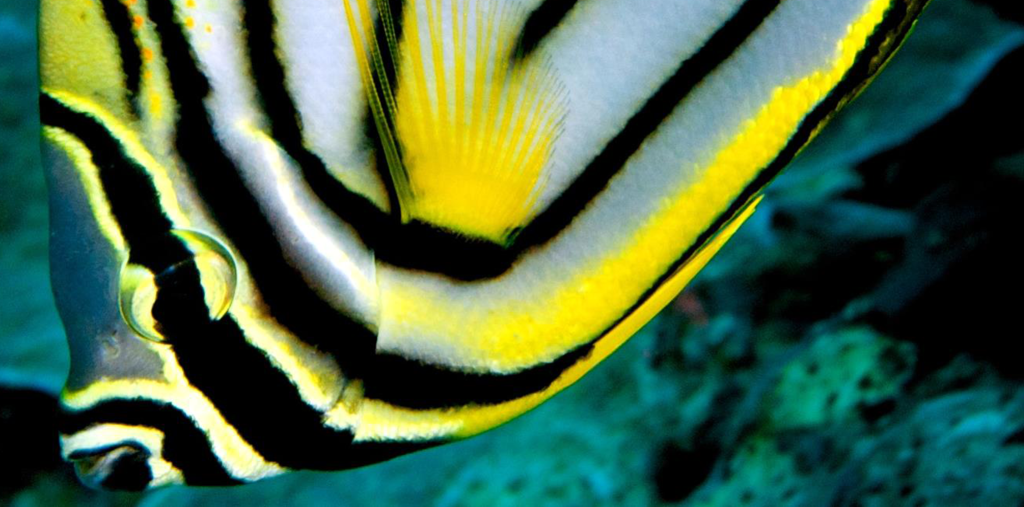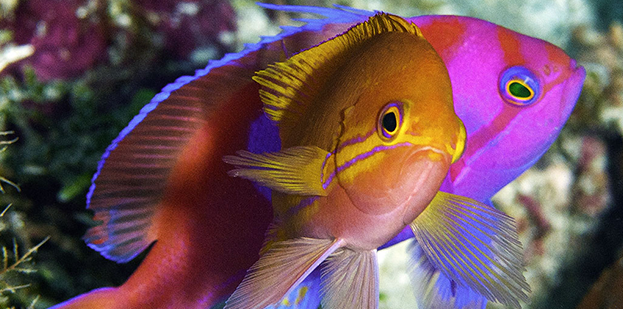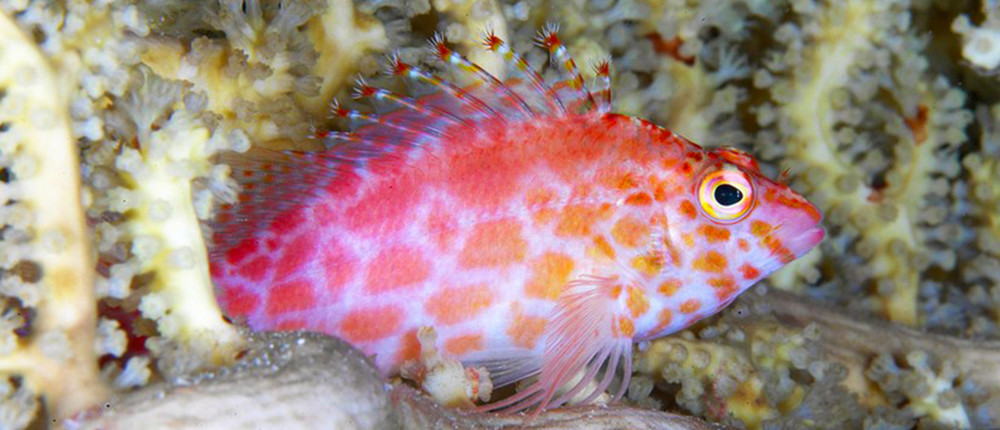Playing the Odds
Survival and reproduction on the reef
While diving a coral reef, vibrant and bursting with activity, it’s easy to think of this ecosystem as a ‘magical kingdom’ with a community of strikingly beautiful creatures living in serene harmony. Yet, the appearance of serenity is a facade. Life within this coral metropolis can be very difficult. It’s a realm of “eat or be eaten,” with its own brand of ‘mean streets’ and a harsh set of rules. Let’s look at a few of the survival and procreation strategies used by marine creatures you are likely to see on Wakatobi’s reefs.
Survival of the fittest
Watching a pair of ornately colored adult butterflyfish swimming together, foraging amongst the fingers of branching coral, makes one wonder how such delicate creatures make it so far. Yet they do, rising above the challenges presented in the underwater realm during their journey from juvenile to adult. In fact, each species of fish we see on the reefs at Wakatobi is a result of a unique survival and reproductive strategy that that evolves into unique ways to beat the odds.

When it comes to propagation within a set of species it all comes down to finding a suitable mate. Photo by Walt Stearns
The most important underlying rule of nature remains the survival of the fittest. This doesn’t necessarily mean being the biggest or the meanest, but simply that, for a species to flourish, some members of each generation must live long enough to successfully pass on its genetic heritage through propagation. The variations on this strategy are endless, and can involve everything from hiding, armoring and attacking to simply putting out more offspring than competitors in hopes that at least a few will beat the odds and make it to breeding age.
The tasks of seeking and establishing a mate, then brooding and rearing youngsters can be both a perilous as well as delicate matter. Ultimately, when it comes to propagation within a set of species it all comes down to finding a suitable mate.
“Every species has its own bag of survival tricks – adaptations that empower at least some members of each species to live long enough to reproduce before ending up in the bellies of predators in the real-life game of staying alive.” Marty Snyderman
Making the Connection
Unique markings and colors serve as important identifiers for marine species to differentiate others of their kind from the maelstrom of bodies and colors on the reef. According to Boston University marine biologist Gil Rosenthal, as a reef fish retreats, distance and motion can make it difficult for predators to perceive fine details and distinguish closely spaced outlines of contrasting colors. So at a distance, spots and stripes blur together, helping even stationary fish merge into the background of the reef and the ocean beyond.
Color can also speak the language of love on the reef; when it comes to marketing yourself as a suitable mate, presentation is everything. Sometimes having the right “suit” is not enough, thus requiring additional tactics such as incorporating particular body postures and movements to draw further attention to the opposite sex.

The stunning markings of this butterflyfish seem to resonate “Hey girls, I’m your man.” Photo by Frank Owens
While color can be a key component for finding a mate, for some species like the frogfish, drawing attention visually is not necessarily the best form of flirting. Frogfish survive by making themselves as inconspicuous as possible, so when it comes time to broadcasting their intentions, they do so chemically, by releasing distinctive scent or ‘pheromone’ into the water. This is handy as subtlety is important when there are plenty of other species of fish that would also happily make you a meal.
” Scientists have long known that color plays a role in sexual selection and warning of danger.” Les Kaufman
For some fish, reproduction is at the very top of their priority list. It is their most important achievement and they take sexual competition extremely seriously. So in order to counteract competition, some fish delay their sexual maturity and begin life as a functional male or female and later change to the other sex! For example, the squarespot anthia begins its life as a female in a harem with one dominant male. The female clearly distinguishes herself by showing a bright orange color, whereas the male is a beautiful purple and displays a square spot on each side of his body, hence their name. If the male dies or is removed from the harem, the highest ranking female will rapidly change sex, color and size in order to replace him and take over the command of the harem. As a juvenile female in a harem, the squarespot anthia also benefits by the protection of the dominant male.

The squarespot anthia begins its life as a female in a harem with one dominant male. As a juvenile female in a harem, the squarespot anthia also benefits by the protection of the dominant male. Photo by Mark Vanderlinden
So you think you’ve found the right mate, but have you? In the world of fishes, the odds for a species’ continuing successful rate of survival can boil down to a numbers game. In most marine species, the fecundity (egg production capability) of a female is directly related to her size and even her age. The larger and older she is so is her capacity to produce larger batches of bigger and better eggs (roe). Bigger and better eggs produce bigger and stronger larvae, which can translate to a larger number of that brood more likely to survive to adulthood. This is the attraction point that drives male suitors instinctively after the larger, more mature females. Here again, it’s survival of the fittest, or strongest.


